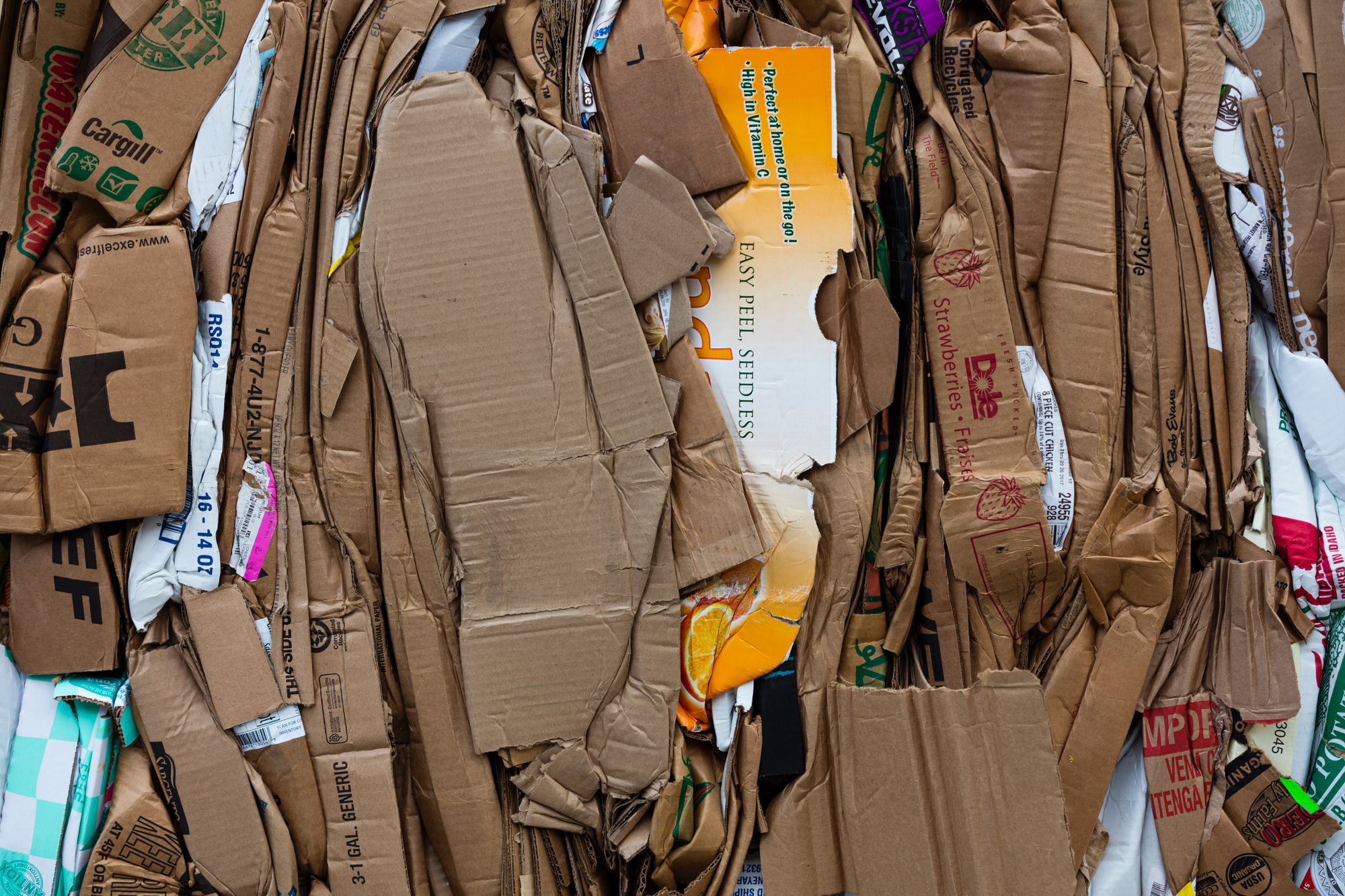As per Deloitte, the adoption of digital technologies such as automation, artificial intelligence, and machine learning is expected to increase in the paper manufacturing industry, leading to improved efficiency and reduced costs.
Paper manufacturing is a critical industry that plays an essential role in our daily lives, from newspapers and magazines to packaging materials and office supplies. The effectiveness of paper manufacturing is critical to ensuring that high-quality paper products are produced efficiently, sustainably, and cost-effectively.

Measuring the effectiveness of paper manufacturing through key performance indicators (KPIs) is essential to achieving these goals. By tracking KPIs such as raw material usage, energy consumption, waste reduction, and employee productivity, paper manufacturers can identify areas for improvement, optimize their processes, reduce costs, and increase profitability.
In this way, measuring and improving the effectiveness of paper manufacturing is crucial to meeting the growing demand for high-quality paper products while minimizing the impact on the environment and ensuring the industry's long-term viability.
This article will be your complete guide on how to measure the effectiveness of paper manufacturing by covering the following topics:
- Importance of Effective Paper Manufacturing
- Factors Affecting the Effectiveness of Paper Manufacturing
- Importance of Measuring the Effectiveness of Paper Manufacturing
- How to Measure the Effectiveness of Paper Manufacturing?
- Significance of Measuring Paper Manufacturing KPIs
- Challenges in Measuring the Effectiveness of Paper Manufacturing
- Strategies for Improving the Effectiveness of Paper Manufacturing
- Common Tools for Measuring the Effectiveness of Paper Manufacturing
- Future Trends in Measuring the Effectiveness of Paper Manufacturing
- How can ERP and MRP Systems Ensure Efficient Paper Manufacturing?
- How can Deskera Help You Ensure Effective Paper Manufacturing?
- Key Takeaways
- Related Articles
Importance of Effective Paper Manufacturing
Effective paper manufacturing is essential for several reasons:
- Quality products: Effective paper manufacturing ensures that paper products meet quality standards and customer expectations. High-quality products are essential to maintaining customer satisfaction and strong customer loyalty.
- Resource optimization: Effective paper manufacturing optimizes the use of raw materials, energy, and other resources. This reduces waste and promotes environmental sustainability while also reducing manufacturing costs.
- Regulatory compliance: Effective paper manufacturing ensures that companies comply with industry standards and regulatory requirements. Compliance is essential to avoid fines and legal issues.
- Employee safety: Effective paper manufacturing prioritizes employee safety by implementing safety protocols and providing safety training. This reduces the risk of accidents and injuries and promotes a safe working environment.
- Competitive advantage: Effective paper manufacturing gives companies a competitive advantage by improving product quality, reducing costs, and promoting sustainability. This helps companies stand out in the market and attract and retain customers.
- Economic benefits: Effective paper manufacturing can have positive economic impacts, such as job creation and increased revenues for companies and communities.
Overall, effective paper manufacturing is essential to maintaining high-quality products, optimizing resources, ensuring regulatory compliance, prioritizing employee safety, gaining a competitive advantage, and promoting economic benefits.
Factors Affecting the Effectiveness of Paper Manufacturing
There are several factors that can affect the effectiveness of paper manufacturing. These include:
- Raw materials: The quality and availability of raw materials can impact the effectiveness of paper manufacturing. For example, variations in the quality of pulp can affect the strength and appearance of the final product, while fluctuations in the price of raw materials can impact production costs.
- Energy and resource efficiency: The efficiency of energy and resource usage can impact the effectiveness of paper manufacturing. For example, inefficient use of water, electricity, and other resources can drive up production costs and impact sustainability.
- Technology and equipment: The technology and equipment used in paper manufacturing can impact the effectiveness of the process. For example, outdated or inefficient equipment can result in lower production rates and increased downtime, while modern equipment and technology can increase efficiency and productivity.
- Supply chain management: Effective supply chain management is critical to the effectiveness of paper manufacturing. A well-managed supply chain can ensure that raw materials are available when needed, that production is not interrupted, and that products are delivered to customers on time.
- Workforce skills and training: The skills and training of the workforce can impact the effectiveness of paper manufacturing. A skilled and well-trained workforce can help to identify and solve problems quickly, increase efficiency, and improve product quality.
- Regulatory compliance: Compliance with environmental, health and safety, and other regulations can impact the effectiveness of paper manufacturing. Failure to comply with regulations can result in fines, legal action, and damage to the company's reputation.
Overall, these factors can significantly impact the effectiveness of paper manufacturing. By managing these factors effectively, paper manufacturers can improve efficiency, reduce costs, and improve product quality.
Importance of Measuring the Effectiveness of Paper Manufacturing
Measuring the effectiveness of paper manufacturing is important for several reasons:
- Quality control: Measuring effectiveness helps manufacturers ensure that their products meet the required quality standards. By monitoring key indicators such as product quality, customer satisfaction, and safety incidents, manufacturers can identify areas of improvement and take corrective action to address quality issues.
- Resource optimization: Effective measurement of paper manufacturing processes can help manufacturers identify areas where resources are being wasted or used inefficiently. This can lead to cost savings and improved profitability.
- Environmental impact: Measuring the effectiveness of paper manufacturing can help manufacturers identify ways to reduce their environmental impact. By tracking metrics such as energy consumption, water usage, and raw material usage, manufacturers can implement more sustainable practices and reduce their carbon footprint.
- Compliance: Measuring effectiveness helps ensure that manufacturers are meeting regulatory requirements and complying with industry standards. This can help avoid costly fines and legal issues.
- Customer satisfaction: Finally, measuring the effectiveness of paper manufacturing is essential to maintaining customer satisfaction. By monitoring metrics such as on-time delivery, product quality, and customer feedback, manufacturers can identify areas where they can improve their products and services and thus, encourage returning customers, which will also improve your cash flow.
- Improved safety: Measuring effectiveness can help manufacturers identify areas of their process that may be causing safety incidents. By addressing these issues, manufacturers can improve workplace safety and reduce the risk of accidents and injuries.
Overall, measuring the effectiveness of paper manufacturing is essential to improving the quality of products, optimizing resource usage, reducing environmental impact, ensuring compliance, enhancing customer satisfaction, and improving safety.
How to Measure the Effectiveness of Paper Manufacturing?
Measuring the effectiveness of paper manufacturing involves tracking various metrics and implementing strategies to improve efficiency, reduce waste, and ensure high-quality output.
Here are some of the most common metrics used:
Production Output
Production output is one of the most important key performance indicators (KPIs) for measuring the effectiveness of paper manufacturing. Production output measures the total amount of paper produced by the manufacturing plant, typically measured in tons, reams, or other units.
A high production output indicates that the paper manufacturing process is efficient and that the manufacturing plant is producing a large amount of paper in a relatively short period of time. This can lead to increased net revenue for the manufacturing plant, as well as lower unit costs due to economies of scale.
However, it's important to note that production output should not be the only KPI used to measure the effectiveness of paper manufacturing. Other KPIs, such as quality control, energy consumption, and waste reduction, should also be monitored to ensure that the manufacturing process is sustainable and environmentally responsible.
Additionally, production output can be influenced by a variety of factors, such as the availability of raw materials, the capacity of the manufacturing equipment, and the skills and productivity of the employees.
Therefore, it's important to analyze production output in conjunction with other KPIs to gain a more comprehensive picture of the effectiveness of paper manufacturing.
Machine Uptime
Machine uptime is another important key performance indicator (KPI) used to measure the effectiveness of paper manufacturing. Machine uptime measures the amount of time that paper-making machines are operational and producing paper, as opposed to downtime for maintenance or repairs.
High machine uptime is an indicator of efficient paper manufacturing processes. It means that the machines are operating at a high level of productivity, which leads to higher production output and lower unit costs.
However, it's important to balance high machine uptime with maintenance, and repair needs to prevent unexpected breakdowns or quality issues. A preventive maintenance schedule can help reduce downtime and prolong the life of machines.
Machine uptime can be influenced by several factors, such as equipment design, operator skills, maintenance schedules, and availability of spare parts. Monitoring machine uptime can help identify areas where improvements can be made to increase efficiency, reduce downtime, and improve the overall effectiveness of paper manufacturing.
Energy Consumption
Energy consumption is a critical key performance indicator (KPI) used to measure the effectiveness of paper manufacturing. Energy consumption measures the amount of energy consumed by the manufacturing plant in producing paper, such as electricity, fuel, and steam.
High energy consumption can lead to increased operating costs, a higher carbon footprint, and negative environmental impact. Therefore, it's important to monitor energy consumption to identify opportunities for energy conservation and efficiency improvements.
There are several strategies that can be used to reduce energy consumption in paper manufacturing, such as using more efficient equipment, optimizing production processes, and implementing energy-efficient lighting and HVAC systems. These strategies can help reduce costs, improve sustainability, and improve the overall effectiveness of paper manufacturing.
Monitoring energy consumption can also help identify potential issues, such as energy waste due to equipment malfunction, and prioritize energy efficiency projects based on the energy consumption data.
Overall, energy consumption is an essential KPI for measuring the effectiveness of paper manufacturing, and by monitoring and improving it, manufacturers can reduce costs, improve sustainability, and stay competitive in the industry.
Waste Reduction
When it comes to measuring the effectiveness of paper manufacturing with respect to waste reduction, there are several key indicators that can be used to assess the performance of the process. Here are some suggestions:
- Raw material usage: One key measure of waste reduction in paper manufacturing is the number of raw materials used in the process. This includes the amount of wood fiber, water, and chemicals used to produce a given amount of paper. By tracking this metric, manufacturers can identify opportunities to reduce waste and optimize their processes.
- Energy usage: Another important measure of waste reduction is the amount of energy consumed during paper manufacturing. This includes energy used to power machinery, heat water, and dry paper. By reducing energy consumption, manufacturers can not only reduce waste but also lower their operating costs and carbon footprint.
- Water usage: Paper manufacturing is a water-intensive process, and reducing water usage can have a significant impact on waste reduction. Manufacturers can measure the amount of water used per unit of paper produced and identify opportunities to reduce water usage through process optimization and recycling.
- Waste generation: Of course, one of the most obvious measures of waste reduction is the amount of waste generated during the paper manufacturing process. This includes both solid waste and wastewater. By tracking this metric and identifying the sources of waste generation, manufacturers can implement strategies to reduce waste and improve their environmental performance.
- Recycling rate: Finally, manufacturers can measure the effectiveness of their waste reduction efforts by tracking their recycling rate. This includes not only the recycling of paper waste but also the recycling of other materials used in the manufacturing process, such as chemicals and metals. By increasing their recycling rate, manufacturers can reduce waste and conserve natural resources.
Quality Control
When it comes to measuring the effectiveness of paper manufacturing with respect to quality control, there are several key indicators that can be used to assess the performance of the process. Here are some suggestions:
- Consistency of paper properties: One key measure of quality control in paper manufacturing is the consistency of paper properties such as thickness, weight, strength, and brightness. By measuring these properties regularly, manufacturers can ensure that their processes are producing a paper that meets their desired specifications and quality standards.
- Defect rate: Another important measure of quality control is the defect rate, which includes any imperfections in the paper, such as holes, wrinkles, or spots. By tracking the defect rate and identifying the sources of defects, manufacturers can implement strategies to reduce defects and improve the quality of their paper products.
- Customer complaints: Manufacturers can also measure the effectiveness of their quality control efforts by tracking customer complaints. This includes any complaints related to paper quality or performance, such as poor print quality or low durability. By addressing customer complaints and improving their products accordingly, manufacturers can ensure customer satisfaction and loyalty.
- Internal testing and auditing: To ensure consistent quality control, manufacturers can conduct regular internal testing and auditing of their processes and products. This can include testing for paper properties, defects, and other quality indicators. By identifying areas for improvement and implementing corrective actions, manufacturers can continuously improve the quality of their paper products, which will ultimately lead to positive brand awareness.
- Industry standards and certifications: Manufacturers can also measure the effectiveness of their quality control efforts by comparing their processes and products to industry standards and certifications. For example, certification programs such as the Forest Stewardship Council (FSC) and the Programme for the Endorsement of Forest Certification (PEFC) ensure that products meet certain environmental and social standards. By obtaining and maintaining these certifications, manufacturers can demonstrate their commitment to quality and sustainability.
Raw Material Usage
Raw material usage is an important factor to consider when measuring the effectiveness of paper manufacturing. Here are some key indicators that can be used to assess the performance of the process with respect to raw material usage:
- Wood fiber usage: Wood fiber is the primary raw material used in paper manufacturing. One key measure of effectiveness is the amount of wood fiber used to produce a given amount of paper. By tracking this metric, manufacturers can identify opportunities to reduce waste and optimize their processes.
- Recycled fiber usage: Many paper manufacturers use recycled fiber in their products. By tracking the percentage of recycled fiber used in their paper products, manufacturers can measure their commitment to sustainability and identify opportunities to increase the use of recycled fiber.
- Water usage: Paper manufacturing is a water-intensive process, and reducing water usage can have a significant impact on raw material usage. Manufacturers can measure the amount of water used per unit of paper produced and identify opportunities to reduce water usage through process optimization and recycling.
- Chemical usage: Chemicals are used in paper manufacturing to bleach and process wood fiber. Manufacturers can measure the number of chemicals used per unit of paper produced and identify opportunities to reduce chemical usage through process optimization and alternative materials.
- Waste reduction: Finally, manufacturers can measure the effectiveness of their raw material usage by tracking waste reduction. This includes not only solid waste but also wastewater. By reducing waste generation and improving their environmental performance, manufacturers can conserve natural resources and reduce their environmental impact.
Water Usage
Water usage is a critical factor in measuring the effectiveness of paper manufacturing. Here are some key indicators that can be used to assess the performance of the process with respect to water usage:
- Total water usage: One key measure of effectiveness is the total amount of water used in the paper manufacturing process. This includes water used for pulp preparation, paper production, and other associated processes. By tracking this metric, manufacturers can identify opportunities to reduce water usage and optimize their processes.
- Water usage per ton of paper: Another important measure of water usage is the amount of water used per ton of paper produced. By measuring this metric, manufacturers can compare their water usage to industry standards and identify opportunities to reduce water consumption.
- Recycled water usage: Many paper manufacturers recycle water for use in their processes. By tracking the percentage of recycled water used in their operations, manufacturers can measure their commitment to sustainability and identify opportunities to increase the use of recycled water.
- Wastewater treatment efficiency: Paper manufacturing generates significant amounts of wastewater, and it is important to ensure that this wastewater is treated effectively to minimize environmental impact. Manufacturers can measure the efficiency of their wastewater treatment systems by tracking the quality of treated water and the number of pollutants removed.
- Water intensity: Finally, manufacturers can measure the water intensity of their paper manufacturing process, which is the amount of water used per unit of output. This can help identify areas where water usage can be reduced through process optimization, recycling, and other strategies.
Employee Productivity
Employee productivity is an important factor to consider when measuring the effectiveness of paper manufacturing. Here are some key indicators that can be used to assess the performance of the process with respect to employee productivity:
- Output per employee: One key measure of productivity is the amount of paper produced per employee. By tracking this metric, manufacturers can identify opportunities to improve efficiency and optimize their workforce.
- Downtime: Downtime can have a significant impact on productivity in paper manufacturing. By tracking the amount of time that production is halted due to equipment failure, maintenance, or other factors, manufacturers can identify opportunities to reduce downtime and increase productivity.
- Overtime and absenteeism: High levels of overtime or absenteeism can be indicators of low productivity or employee dissatisfaction. By tracking these metrics, manufacturers can identify opportunities to improve working conditions, retain top talents and optimize their workforce.
- Training and development: Providing employees with training and development opportunities can improve their skills and knowledge, leading to increased productivity. Manufacturers can measure the effectiveness of their training and development programs by tracking employee performance and identifying areas for improvement.
- Safety: Finally, ensuring a safe working environment is critical to maintaining employee productivity. Manufacturers can measure their safety performance by tracking the number of workplace accidents and injuries and implementing strategies to reduce risks and improve the safety culture.
Customer Satisfaction
Customer satisfaction is a critical factor to consider when measuring the effectiveness of paper manufacturing. Here are some key indicators that can be used to assess the performance of the process with respect to customer satisfaction:
- Product quality: The quality of paper products is a key factor in customer satisfaction. Manufacturers can measure product quality by tracking metrics such as defect rates, customer complaints, and product returns. By identifying and addressing quality issues, manufacturers can improve customer satisfaction and retention.
- On-time delivery: Timely delivery of paper products is critical to meeting customer expectations. Manufacturers can measure their on-time delivery performance by tracking delivery times, order fulfillment rates, and other related metrics. By improving delivery performance, manufacturers can increase customer satisfaction and loyalty.
- Customer feedback: Soliciting and analyzing customer feedback is an important way to measure customer satisfaction. Manufacturers can use surveys, focus groups, and other methods to gather feedback from customers about their experience with the company and its products. By acting on customer feedback, manufacturers can improve their products and services and enhance customer satisfaction.
- Customer loyalty: Customer loyalty is an important indicator of satisfaction and is often measured by metrics such as customer retention rates, repeat business, and customer referrals. Manufacturers can implement strategies to improve customer loyalty, such as providing excellent proactive customer service, offering loyalty programs, and personalized communications.
- Sustainable practices: Customers are increasingly concerned about sustainability, and manufacturers can measure their performance in this area by tracking metrics such as the use of recycled materials, energy efficiency, and waste reduction. By demonstrating their commitment to sustainability, manufacturers can increase customer satisfaction and loyalty among environmentally-conscious consumers.
Safety Incidents
Safety incidents are a critical factor to consider when measuring the effectiveness of paper manufacturing. Here are some key indicators that can be used to assess the performance of the process with respect to safety:
- The total number of safety incidents: The total number of safety incidents, including near misses and accidents, is an important metric for measuring the effectiveness of safety practices in paper manufacturing. By tracking this metric, manufacturers can identify areas of their process that may require additional attention to improve safety.
- Lost time incidents: Lost time incidents refer to injuries or accidents that require an employee to miss work. This metric is a good indicator of the severity of incidents and can help manufacturers identify areas of their process that may require additional safety measures.
- Recordable incidents: Recordable incidents are incidents that require medical treatment beyond first aid or result in restricted work activity or job transfer. By tracking this metric, manufacturers can identify more serious safety incidents and take appropriate action to prevent future occurrences.
- Safety training: Providing safety training to employees is critical to preventing accidents and injuries. Manufacturers can measure the effectiveness of their safety training programs by tracking metrics such as the number of employees trained, frequency of training, and changes in behavior as a result of training.
- Safety culture: A strong safety culture is essential to preventing accidents and injuries in paper manufacturing. Manufacturers can measure their safety culture by tracking metrics such as employee engagement with safety programs, participation in safety committees, and communication of safety policies and procedures. By promoting a strong safety culture, manufacturers can create an environment where safety is a top priority for all employees.
Significance of Measuring Paper Manufacturing KPIs
Measuring Key Performance Indicators (KPIs) in paper manufacturing is significant for several reasons:
- Monitoring performance: KPIs help paper manufacturers monitor their performance and identify areas where improvements are needed. By measuring KPIs regularly, manufacturers can track progress and make adjustments to processes and systems to improve efficiency and quality.
- Setting targets: KPIs provide a way to set specific, measurable targets for performance. These targets can be used to motivate employees, improve accountability, and drive continuous improvement.
- Identifying trends: KPIs can help paper manufacturers identify trends in performance over time. This can be useful for predicting future performance and identifying potential issues before they occur.
- Benchmarking: Measuring KPIs allows paper manufacturers to benchmark their performance against industry standards and best practices. This can help identify areas where improvements are needed and provide a basis for comparison with other companies.
- Communication: KPIs provide a common language for communicating performance metrics across departments and functions within an organization. This can help ensure that everyone is working towards the same goals and can improve collaboration and decision-making.
- Demonstrating value: Measuring KPIs allows paper manufacturers to demonstrate the value of their products and services to customers, investors, and other stakeholders. This can help build trust and credibility and improve relationships with key stakeholders.
Overall, measuring KPIs in paper manufacturing is significant because it provides a way to monitor performance, set targets, identify trends, benchmark performance, improve communication, and demonstrate value to stakeholders.
Challenges in Measuring the Effectiveness of Paper Manufacturing
Measuring the effectiveness of paper manufacturing can present several challenges, including:
- Identifying relevant metrics: It can be challenging to identify the right metrics to measure the effectiveness of paper manufacturing. Metrics must be relevant, measurable, and tied to key performance indicators to provide useful insights.
- Data collection and analysis: Collecting and analyzing data from various sources can be time-consuming and costly. It can also be challenging to ensure the accuracy and consistency of the data.
- The complexity of the manufacturing process: Paper manufacturing involves multiple processes and stages, each with its own set of variables and metrics. This complexity can make it challenging to identify the root cause of quality issues or process inefficiencies.
- Lack of standardization: There may be a lack of standardization in the paper manufacturing industry, making it difficult to compare performance across different companies or even within the same company.
- Resource constraints: Implementing effective measurement systems can require significant resources, such as time, money, and personnel. Small and medium-sized paper manufacturers may have limited resources to invest in such systems.
- Resistance to change: Finally, there may be resistance to change from employees or management, making it difficult to implement new measurement systems or process improvements.
Overall, addressing these challenges requires a collaborative effort from all stakeholders, including management, employees, suppliers, and customers. It also requires a willingness to invest in new technologies, processes, and training to improve measurement and analysis capabilities.
Strategies for Improving the Effectiveness of Paper Manufacturing
Here are some strategies to improve the effectiveness of paper manufacturing:
- Adopt lean manufacturing principles: Lean manufacturing principles focus on eliminating waste and improving efficiency in the manufacturing process. By adopting these principles, paper manufacturers can optimize their operations and reduce costs while improving quality and customer satisfaction.
- Implement process automation: Automation can help paper manufacturers improve efficiency and reduce errors by automating repetitive or manual tasks. This can help reduce costs, improve quality, and increase productivity.
- Invest in new technology: Investing in new technology, such as advanced machinery or software, can help paper manufacturers improve efficiency and quality. For example, investing in real-time monitoring systems can help identify process issues and prevent quality problems before they occur.
- Develop a strong safety culture: A strong safety culture is essential to preventing accidents and injuries in paper manufacturing. By prioritizing safety and providing safety training to employees, manufacturers can create a culture where safety is a top priority for all employees.
- Emphasize sustainability: Consumers are increasingly demanding sustainable products, and paper manufacturers can meet this demand by implementing sustainable practices throughout their operations. For example, manufacturers can reduce waste, optimize raw material usage, and reduce energy consumption.
- Collaborate with suppliers and customers: Collaboration with suppliers and customers can help paper manufacturers identify opportunities for improvement and reduce costs. For example, collaborating with suppliers to optimize the delivery of raw materials can help reduce inventory costs and improve efficiency.
Overall, by adopting lean manufacturing principles, implementing process automation, investing in new technology, developing a strong safety culture, emphasizing sustainability, and collaborating with suppliers and customers, paper manufacturers can improve the effectiveness of their operations, reduce costs, and increase customer satisfaction.
Common Tools for Measuring the Effectiveness of Paper Manufacturing
There are several tools that can be used to measure effectiveness in paper manufacturing:
- Statistical process control (SPC): SPC is a quality control technique that uses statistical methods to monitor and control a process. It involves tracking process variables over time to detect any changes or deviations that could impact product quality.
- Total quality management (TQM): TQM is a management approach that focuses on the continuous improvement of all aspects of an organization, including processes, products, and services. It involves measuring and analyzing performance metrics to identify areas for improvement.
- Lean manufacturing: Lean manufacturing is a process improvement methodology that focuses on maximizing value while minimizing waste. It involves analyzing each step in the manufacturing process to identify and eliminate waste, such as excess inventory or unnecessary steps.
- Six Sigma: Six Sigma is a data-driven methodology that aims to reduce defects and improve process quality. It involves using statistical analysis and quality control tools to identify and address areas of variation in the manufacturing process.
- Key performance indicators (KPIs): KPIs are specific metrics that are used to measure and track performance over time. Common KPIs in paper manufacturing include raw material usage, waste reduction, energy consumption, and customer satisfaction.
- Root cause analysis (RCA): RCA is a problem-solving methodology that involves identifying the underlying causes of issues or problems. It can be used to identify the root causes of quality issues, process inefficiencies, and other problems in paper manufacturing.
Overall, these tools can be used to measure and improve effectiveness in paper manufacturing by identifying areas for improvement, optimizing processes, reducing waste, and improving product quality.
Future Trends in Measuring the Effectiveness of Paper Manufacturing
Some future trends in measuring effectiveness in paper manufacturing include:
- Digitalization and automation: As digital technologies and automation become more prevalent in paper manufacturing, there will be an increased focus on measuring the effectiveness of these systems. This could include tracking metrics such as equipment uptime, energy consumption, and production efficiency.
- Sustainability metrics: As concerns about environmental sustainability continue to grow, paper manufacturers will need to measure their sustainability performance. This could include metrics such as carbon footprint, water usage, and waste reduction.
- Supply chain metrics: As paper manufacturing supply chains become more complex, there will be a greater need to measure supply chain performance. This could include metrics such as supplier performance, inventory levels, and transportation efficiency.
- Customer experience metrics: As customer expectations continue to evolve, paper manufacturers will need to measure and track customer experience metrics such as customer satisfaction, product quality, and delivery times.
- Real-time monitoring: Real-time monitoring of production processes and equipment will become more common in paper manufacturing. This will allow manufacturers to identify issues and inefficiencies quickly and take corrective action in real time.
- Predictive analytics: Predictive analytics will become more prevalent in paper manufacturing, allowing manufacturers to anticipate and prevent quality issues and production downtime before they occur.
Overall, the future of measuring effectiveness in paper manufacturing will likely involve a greater focus on sustainability, supply chain performance, customer experience, real-time monitoring, and predictive analytics.
How can ERP and MRP Systems Ensure Efficient Paper Manufacturing?
ERP (Enterprise Resource Planning) and MRP (Materials Requirements Planning) systems can help ensure efficient paper manufacturing in several ways:
- Improved planning and scheduling: ERP and MRP systems can help to optimize production schedules based on available resources, inventory levels, and customer demand. This can help to reduce downtime, minimize waste, and improve efficiency.
- Real-time visibility: ERP and MRP systems can provide real-time visibility into production processes, inventory levels, and supply chain activities. This can help managers to identify issues quickly, make data-driven decisions, and take corrective action when necessary.
- Improved inventory management: ERP and MRP systems can help to optimize inventory levels and reduce the risk of stockouts or excess inventory. This can help to minimize waste, reduce costs, and improve efficiency.
- Streamlined workflows: ERP and MRP systems can help to streamline workflows by automating repetitive tasks, reducing manual data entry, and improving communication between departments. This can help to reduce errors, improve efficiency, and save time.
- Better cost management: ERP and MRP systems can help to track costs more effectively by providing detailed cost data for each production run. This can help managers to identify areas where costs can be reduced and make more informed decisions about pricing and profitability.
Overall, ERP and MRP systems can help to ensure efficient paper manufacturing by improving planning and scheduling, providing real-time visibility, optimizing inventory levels, streamlining workflows, and improving cost management.
By leveraging these systems effectively, paper manufacturers can improve efficiency, reduce costs, and improve customer satisfaction.
How can Deskera Help You Ensure Effective Paper Manufacturing?
Deskera is an MRP system that can help ensure effective paper manufacturing in several ways:
- Streamlining production processes: Deskera MRP can help streamline production processes, ensuring that raw materials are procured and utilized efficiently. The module can track each stage of production, from raw materials to finished goods, providing real-time updates on the progress. This can help manufacturers identify bottlenecks and optimize production processes to ensure effective manufacturing.
- Quality control: Deskera MRP can help manufacturers maintain product quality and comply with regulatory requirements. The module can track quality control processes and provide real-time updates on the quality status. Manufacturers can identify issues and take corrective actions to ensure that the products meet the required quality standards.
- Inventory management: Deskera MRP can help manufacturers optimize inventory levels, reducing wastage and minimizing storage costs. The module can track raw materials, work-in-progress, and finished goods inventory levels, providing real-time updates on inventory status. This can help manufacturers make informed decisions on inventory management to ensure effective manufacturing.
- Cost accounting: Deskera Books can help manufacturers track production costs and measure profitability. The module can track the cost of raw materials, labor, and overheads, providing real-time updates on cost status. This can help manufacturers identify cost-saving opportunities and optimize production processes to ensure effective manufacturing.
- Real-time reporting and analytics: Deskera's reporting and analytics capabilities provide manufacturers with real-time insights into their production processes, inventory levels, quality control processes, and cost accounting. This can help manufacturers identify issues and take corrective actions promptly, ensuring effective manufacturing.
Key Takeaways
Measuring the effectiveness of paper manufacturing is crucial to identifying areas for improvement, optimizing processes, reducing costs, and increasing profitability.
Key performance indicators (KPIs) to measure the effectiveness of paper manufacturing are:
- Production output
- Machine uptime
- Energy consumption
- Waste reduction
- Quality control
- Raw material usage
- Water usage
- Employee productivity
- Customer satisfaction
- Safety incidents
ERP and MRP systems can help ensure efficient paper manufacturing by improving planning and scheduling, providing real-time visibility, optimizing inventory levels, streamlining workflows, and improving cost management.
Recent trends and developments in the paper manufacturing industry include increasing production, growth in paper packaging, adoption of digital technologies, improvements in recycling rates, and the shift towards renewable energy sources.
In conclusion, measuring and improving the effectiveness of paper manufacturing is critical to ensuring that high-quality paper products are produced efficiently, sustainably, and cost-effectively.
By tracking key performance indicators and leveraging technology, paper manufacturers can optimize their processes, reduce costs, and increase profitability while minimizing their impact on the environment.
As the demand for paper products continues to grow, the effective management of the paper manufacturing industry will become increasingly essential.
Deskera MRP can help ensure effective paper manufacturing by streamlining production processes, maintaining product quality, optimizing inventory levels, tracking production costs, and providing real-time reporting and analytics.
Related Articles












